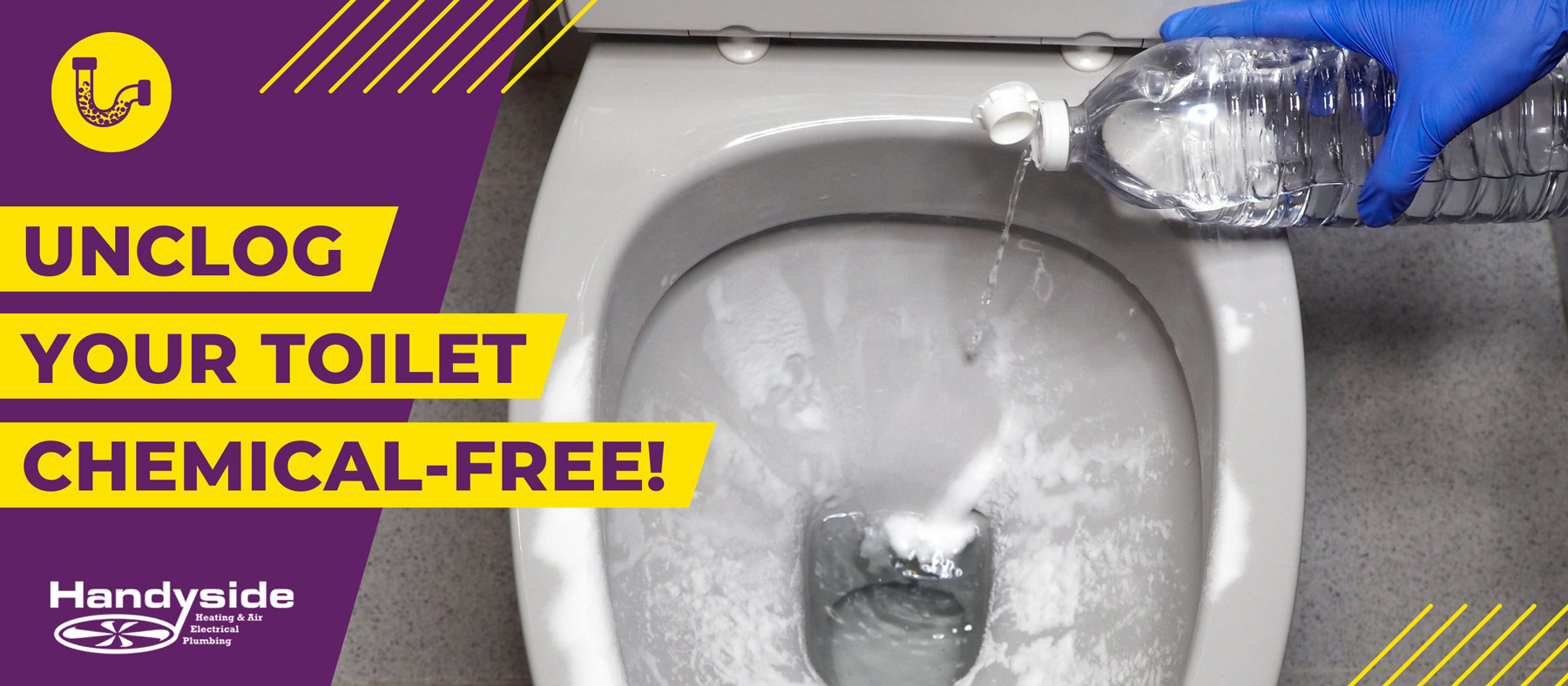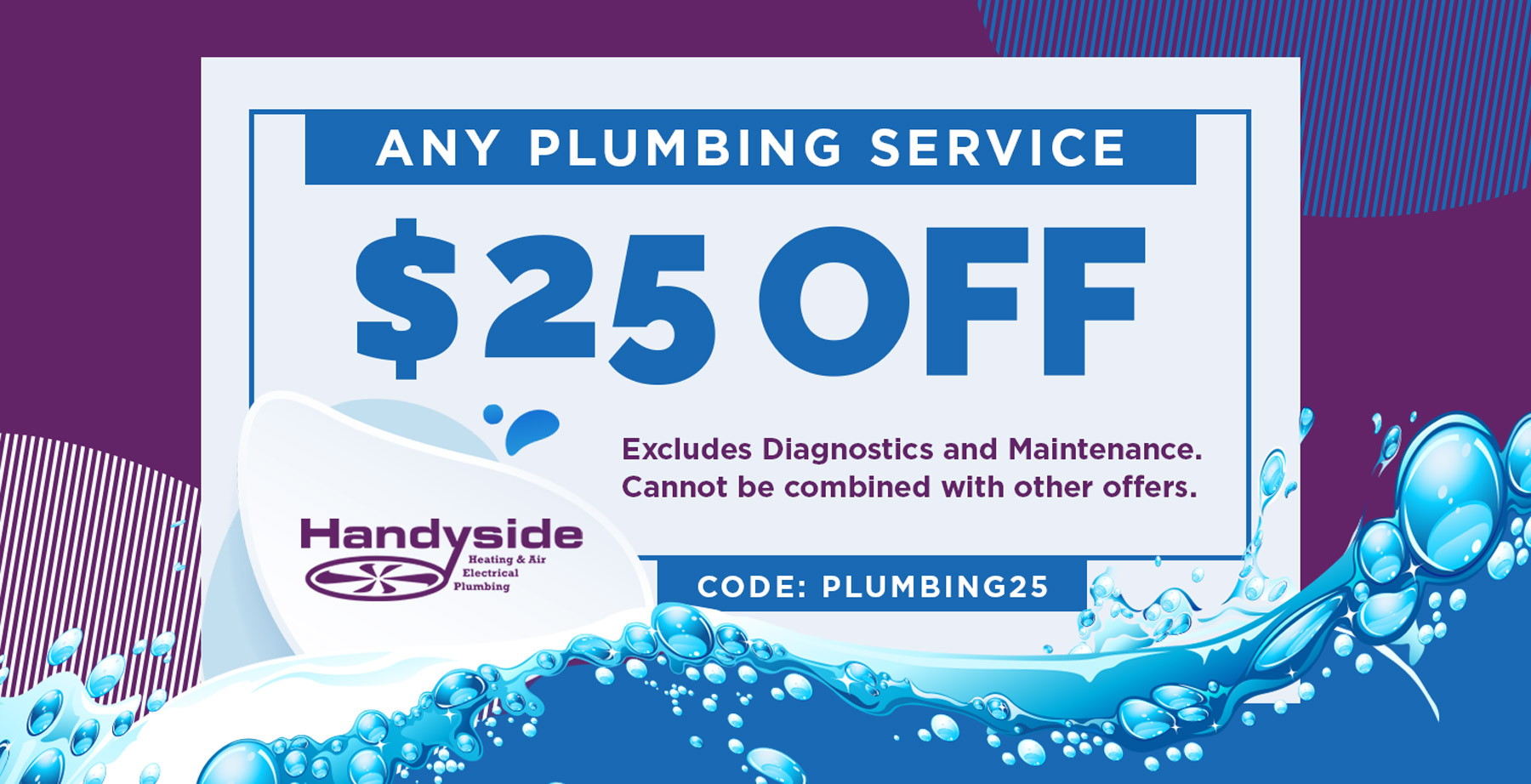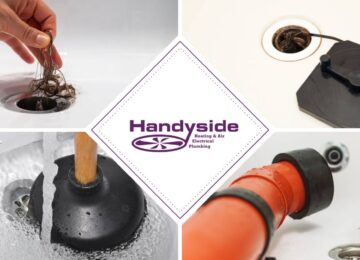It’s a really good idea to have a plunger in the bathroom the next time the toilet is clogged. The plunger can easily be stored under the sink or in a storage closet, as it’s the fastest way to clear most clogs.
What if you don’t have a plunger? Or, did your plunger break and you didn’t get a chance to replace it? Is there any hope for clearing the clog?
Hot Water
One of the easiest ways to unclog a toilet is with hot water. Start by heating up some water, but make sure it’s not boiling, as that can crack the porcelain in your toilet. Carefully pour the warm water into the toilet bowl from waist height to create enough force to dislodge the clog. The heat helps break down any waste or paper causing the blockage. Give it a few minutes, and you may see the water level start to lower on its own.
If the water doesn’t go down right away, don’t be discouraged. Sometimes, it takes a little time for the hot water to do its job. You might even try adding a bit more warm water if the first attempt doesn’t work. Patience is key when attempting to unclog a toilet this way.
Surprisingly, this method is successful most of the time! It works even better when used in conjunction with a plunger. But if you don’t have one, this method can still be very effective.
Baking Soda and Vinegar
You might have heard of the recommendation to use baking soda and vinegar to unclog a sink. This fizzing/dissolving solution can sometimes work for a clogged toilet, too! You don’t want to recreate your volcano project from elementary school, so be careful with the amount of baking soda and vinegar you combine in the toilet bowl. Start by scooping out a quarter-cup of baking soda and pour it into the toilet bowl as close to the drain as possible. Then, add an equal amount (quarter-cup) of vinegar. The bubbles and fizzing action should drop down to the clog. Depending on the result, you may want to repeat or try a half-cup. Follow it up by pouring a pot full of hot water into the bowl.
You should see improvement. However, if this doesn’t fully clear the clog, repeat the baking soda and vinegar. When it works, you should hear a quick suction sound and then see the water drain naturally. Follow up with hot water and a couple of flushes to be sure it’s cleared.
Try Using Dish Soap
Dish soap isn’t just for washing dishes – it can also help unclog your toilet. Squirt a generous amount of dish soap into the toilet bowl and let it sit for about 10-15 minutes. The soap helps to lubricate the clogged area, making it easier for the waste to slide through the pipes.
After giving the dish soap some time to work, try pouring warm water (not hot) into the toilet. The combination of dish soap and warm water can be incredibly effective at dislodging the clog. If needed, repeat the process a couple of times. This method is gentle on your plumbing system and can save you from a lot of frustration.
Create a Snake for Your Toilet
A wire hanger can be a handy tool for unclogging a toilet. Straighten out the hanger, leaving a small hook on one end. This makeshift snake can reach down into the pipes and help break up whatever is causing the clog.
Put on some rubber gloves to keep things sanitary, and gently insert the hooked end of the hanger into the drain. Twist and push the hanger to dislodge the clog. This method requires a bit of elbow grease, but it’s an effective way to reach clogs that are deeper in the plumbing system. Once you’ve worked the hanger around, flush the toilet to see if the water level goes down.
Force Airflow Through
Another method to unclog your toilet involves using air pressure. One way to do this is by using an empty plastic bottle. Start by removing some of the water from the toilet bowl to avoid splashing (we’ll get more into that later). Fill the bottle with warm water and then position it so that the opening is facing down into the drain hole. Cover the top of the bottle with your thumb and squeeze the bottle hard. The pressure created from the water being forced out can help dislodge the clog.
Why Do Toilets Get Clogged? How Can You Avoid it?
Toilets often get clogged due to a variety of reasons. One common cause is flushing items that aren’t meant to be flushed. Things like wipes, paper towels, feminine hygiene products, and even too much toilet paper can cause blockages. It’s important to remember that toilets and their plumbing systems are designed to handle only human waste and toilet paper.
Another culprit for clogged toilets is hard water deposits. Over time, minerals from hard water can build up in the pipes, narrowing the passage and making it easier for clogs to form. To prevent this, consider using a water softener if hard water is an issue in your home.
Flushing habits also play a big role in preventing clogs. Teach your household to flush only appropriate items and to use a reasonable amount of toilet paper. You can also try periodically flushing the toilet with a bit of dish soap and hot water, which can help keep things running smoothly. By being mindful of what goes down the toilet and following a few maintenance tricks, you can avoid many common causes of clogs.
What Not To Do
Many homeowners will run to the grocery store and purchase a bottle of chemicals that are supposedly “guaranteed” to clear the drain. We do not recommend these products as they are harsh chemicals. They are unsafe and may be corrosive to your plumbing or cause damage to older pipes. They may even cause serious injury if they splash on you or on a technician who comes in to clear the clog. Consumers often report that these drain-cleaning chemicals fail to clear stubborn clogs. In many cases you’re just pouring your money down the drain with these chemicals.
Remember not to use baking soda and vinegar before or after using these drain-cleaning chemicals. It’s impossible to completely clear out all these different components before trying something different… because after all, the drain is clogged!
Don’t Forget to Manually Remove Some of the Water in Order to Perform Some of These Methods Safely!
Before attempting to unclog your toilet, it’s smart to manually remove some water. This helps avoid any messy situations and allows the solutions, like hot water or dish soap, to be more effective. You can use a small container to scoop out the excess water and pour it into a bucket.
Removing water prevents overflow (a big deal) and also makes it easier to see the results of your efforts. For example, when using the hot water method, having less water in the bowl helps the warm water directly interact with the clog. Creating space for the dish soap or maneuvering a wire hanger becomes much simpler with a lower water level.
The Best Solutions
If the hot water and baking soda/vinegar methods fail to unclog your toilet, you should buy yourself a plunger. However, there are times when a clog is so stubborn that only a professional plumber, like Handyside, will be able to clear it completely and quickly. So don’t hesitate to call Handyside if the methods mentioned above fail to clear your clog.
We offer professional plumbing and drain services to effectively handle any clog, big or small. Our team can quickly dislodge the clog and get your plumbing system back in top shape. Speak with us today to learn about our plumbing repair services and more!
![How to Unclog a Toilet Without a Plunger It’s a really good idea to have a plunger in the bathroom the next time the toilet is clogged. The plunger can easily be stored under the sink or in a storage closet, as it’s the fastest way to clear most clogs. What if you don’t have a plunger? Or, did your plunger break and […]](https://handysideinc.com/wp-content/uploads/2023/04/Clear-The-Clog-Without-A-Plunger-1-750x420.jpg)





